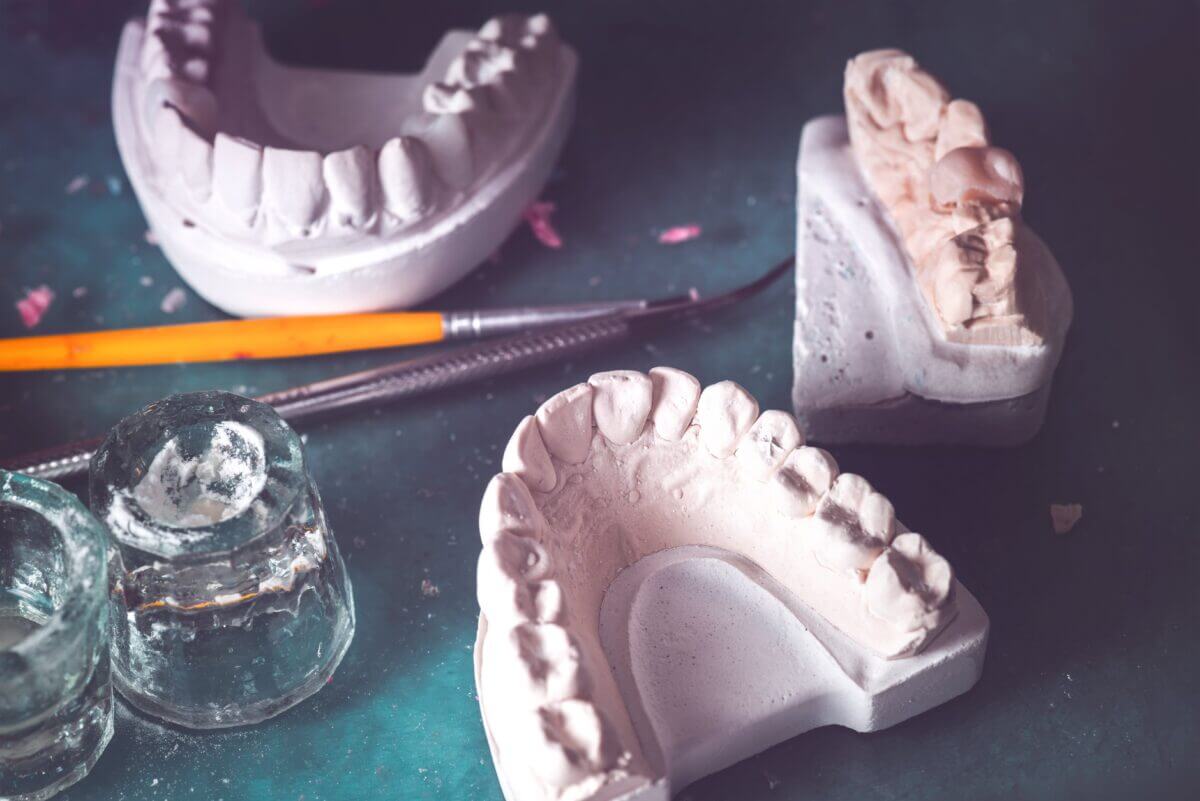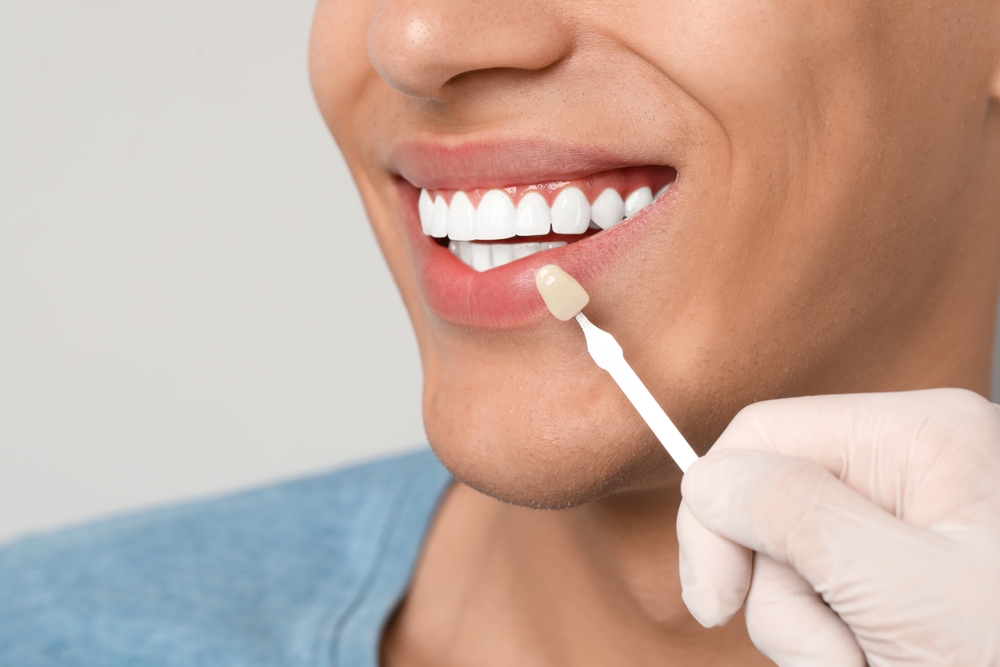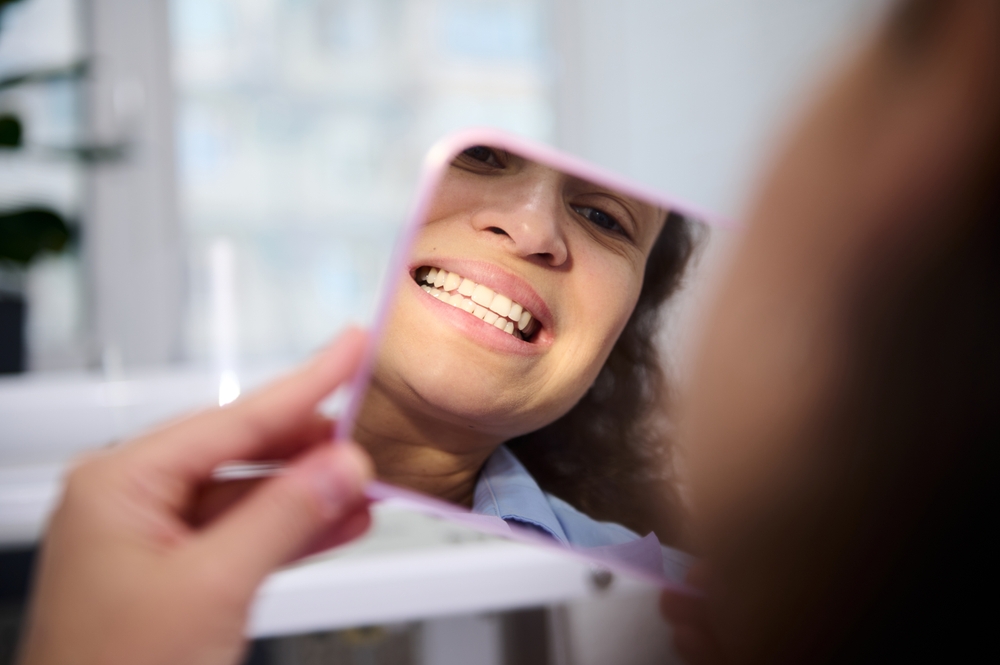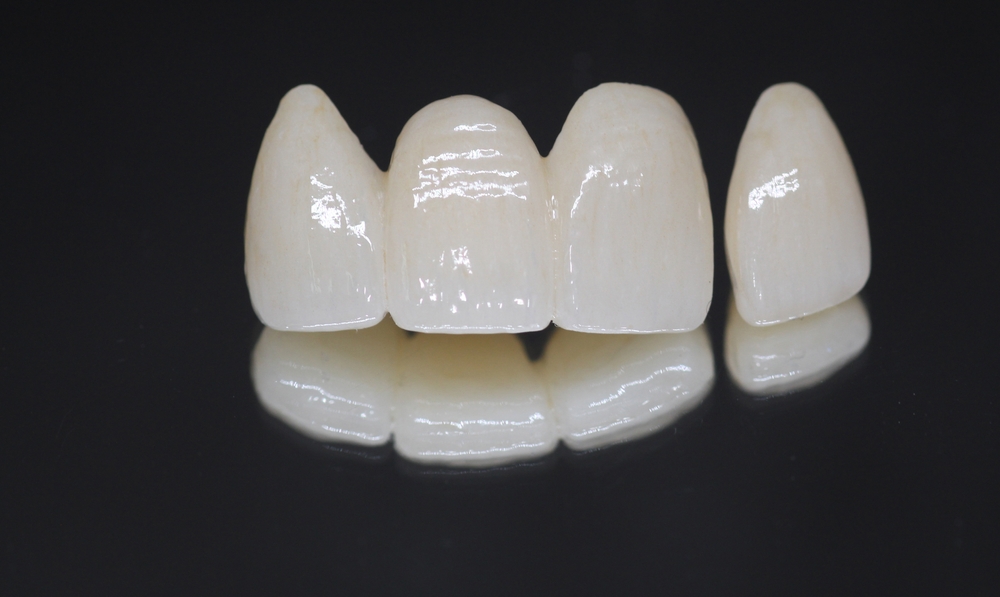Dental labs play a crucial role in the dental industry, as they are responsible for creating high-quality dental restorations. However, these labs often face a range of challenges that can impact their productivity, efficiency, and overall success. In this blog, we will explore some of the common challenges faced by dental labs and provide practical solutions to address them effectively.
Lack of Communication with Dental Clinics and Dentists:
A lack of communication is a significant challenge faced by dental labs, as it can lead to a range of issues that negatively impact the quality and efficiency of their work. Here are some reasons why communication gaps occur and practical solutions to address them:
Inaccurate or Incomplete Information:
When dental clinics or dentists fail to provide accurate or complete information about a case, it can result in misunderstandings and errors during the production process. This can lead to wasted time, resources, and unsatisfactory outcomes for patients. To fix this, dental labs can take the following steps:
- Establish Clear Communication Channels: Dental labs should establish effective communication channels with dental clinics and dentists, such as phone calls, emails, or online platforms. This ensures that all parties have a reliable method to exchange information promptly and securely.
- Request Comprehensive Case Details: When receiving a case, dental labs should proactively request comprehensive case details, including specific patient requirements, material preferences, and any relevant notes or images. This helps eliminate guesswork and ensures that the lab has all the necessary information to produce accurate restorations.
Lack of Timely Communication:
Delays in communication between dental labs and clinics can significantly impact turnaround times and patient satisfaction. It can also lead to missed deadlines and scheduling conflicts. To improve timely communication, dental labs can implement the following measures:
- Regular Meetings or Calls: Dental labs should schedule regular meetings or conference calls with dental clinics and dentists to discuss ongoing cases, address concerns, and ensure that everyone is on the same page. This facilitates real-time communication and allows for immediate resolution of any issues that may arise.
- Utilize Digital Communication Tools: In addition to traditional communication methods, dental labs can leverage digital tools, such as instant messaging or collaborative platforms, to facilitate quick and efficient communication. This enables seamless and instant communication, even when physical meetings are not feasible.
Lack of Collaboration:
A lack of collaboration between dental labs and clinics can hinder the exchange of vital information, leading to misunderstandings and suboptimal outcomes. To foster collaboration, dental labs can implement the following strategies:
- Establishing a Relationship: Dental labs should strive to build strong relationships with dental clinics and dentists. This includes open lines of communication, a willingness to address concerns, and a collaborative mindset. By working together as partners, both parties can ensure the best possible outcomes for patients.
- Encourage Feedback and Dialogue: Dental labs should actively encourage feedback from dental clinics and dentists regarding their experiences with the lab’s products and services. This feedback can help identify areas for improvement and strengthen the overall collaboration between the lab and its clients.
By addressing the lack of communication, dental labs can bridge the gap between themselves and dental clinics, leading to improved efficiency, accuracy, and patient satisfaction. Open and effective communication ensures that all parties involved have a clear understanding of the case requirements, reduces the chances of errors, and facilitates a smooth workflow throughout the production process.
Inefficient Workflow and Turnaround Time:
Inefficient workflow and lengthy turnaround time are significant challenges faced by dental labs, as they can impede productivity, delay deliveries, and negatively impact patient satisfaction. Let’s explore why these challenges occur and discuss effective solutions to address them:
Bottlenecks in the Production Process:
Bottlenecks refer to areas in the workflow where work accumulates, causing delays and inefficiencies. Identifying and addressing these bottlenecks is crucial for improving the overall workflow of a dental lab. Here are some ways to fix this challenge:
- Workflow Analysis: Conduct a thorough analysis of the production process to identify areas where bottlenecks occur. This can be done by mapping out the steps involved in creating dental restorations and identifying stages that experience delays or excessive workloads.
- Process Optimization: Once bottlenecks are identified, implement strategies to optimize the workflow. This may involve redistributing tasks, reallocating resources, or introducing parallel processing methods to ensure a smooth and efficient flow of work.
Digital Tools and Automation:

Integrating digital tools and automation into the workflow can significantly improve efficiency and reduce turnaround time. Here are a few ways to leverage technology to address this challenge:
- CAD/CAM Systems: Implementing Computer-Aided Design (CAD) and Computer-Aided Manufacturing (CAM) systems allows for precise digital scanning, designing, and milling of dental restorations. This streamlines the production process, reduces manual errors, and accelerates the turnaround time.
- Digital Workflow Management: Utilize digital workflow management software to track and manage cases, ensuring seamless coordination between different stages of production. This software can automate task assignments, provide real-time progress updates, and facilitate communication between team members.
Streamlined Communication:
Efficient communication is essential for minimizing delays and ensuring smooth coordination within the dental lab. Here are a few strategies to enhance communication and address workflow challenges:
- Standardized Protocols: Establish standardized protocols and procedures for communicating information within the dental lab. This ensures clarity and consistency, reducing the chances of miscommunication and errors.
- Regular Team Meetings: Conduct regular team meetings to discuss ongoing cases, address concerns, and align everyone’s understanding of expectations. These meetings foster collaboration, allow for prompt issue resolution, and improve overall workflow efficiency.
- Digital Collaboration Tools: Utilize digital collaboration tools, such as project management software or cloud-based platforms, to facilitate real-time communication and file sharing among team members. This ensures that all relevant information is readily accessible and avoids delays caused by inefficient manual communication methods.
By addressing inefficiencies in the workflow and focusing on streamlining communication, dental labs can optimize their operations, reduce turnaround time, and improve overall productivity. Implementing digital tools, optimizing processes, and fostering effective collaboration within the lab are key steps toward achieving an efficient workflow and meeting the expectations of dental clinics and patients.
Quality Control Issues:
Quality control issues pose a significant challenge for dental labs as they can lead to compromised dental restorations, dissatisfied patients, and damage to the lab’s reputation. Here’s an explanation of why quality control issues occur and how to address them effectively:
Inconsistent Product Quality:
Inconsistent product quality can arise due to variations in materials, manufacturing processes, or technician skills. This can result in restorations that do not meet the required standards of fit, aesthetics, or durability. To address this challenge, dental labs can implement the following measures:
- Standardized Protocols and Procedures: Establish standardized protocols and procedures for each step of the production process. This includes clear guidelines on material selection, preparation, manufacturing techniques, and quality checks. Adhering to these protocols helps ensure consistency in product quality.
- Training and Education: Provide regular training and education to lab technicians to enhance their skills and keep them updated with the latest industry trends and best practices. Investing in ongoing professional development helps maintain a high level of expertise and ensures consistent quality outcomes.

Non-compliance with Industry Standards and Regulations:
Failure to comply with industry standards and regulations can have serious consequences for dental labs. Compliance ensures that restorations meet safety requirements and patient expectations. Here’s how to address this challenge:
- Stay Updated with Regulations: Regularly review and stay informed about the latest regulations and standards set by relevant dental associations or regulatory bodies. Implement robust systems to ensure compliance with these standards, including documentation, record-keeping, and traceability of materials used.
- Quality Checks and Inspections: Implement a comprehensive quality control system that includes regular checks and inspections at different stages of the production process. This includes detailed examinations of materials, measurements, and aesthetics to ensure that restorations meet the required specifications and standards.
Continuous Improvement and Feedback:
A lack of feedback mechanisms and a stagnant approach to quality control can hinder a dental lab’s ability to identify and address issues effectively. To address this challenge, dental labs can adopt the following strategies:
- Implement Feedback Loops: Establish channels for receiving feedback from dental clinics, dentists, and patients. This can be done through surveys, evaluations, or open communication platforms. Actively seek feedback to identify areas for improvement and implement necessary changes.
- Root Cause Analysis: Conduct thorough investigations and root cause analysis when quality issues occur. Determine the underlying causes of errors or defects and implement corrective actions to prevent their recurrence. This proactive approach helps in continually improving quality control processes.
- Continuous Monitoring and Auditing: Implement regular monitoring and auditing processes to assess the effectiveness of quality control measures. This includes evaluating performance metrics, conducting internal audits, and seeking external certifications or accreditations to demonstrate commitment to quality standards.
By implementing standardized protocols, investing in training, ensuring compliance, and fostering a culture of continuous improvement, dental labs can effectively address quality control issues. Consistently delivering high-quality dental restorations not only enhances patient satisfaction but also strengthens the reputation and competitiveness of the dental lab in the industry.
Technology and Equipment Limitations:
Technology and equipment limitations pose a significant challenge for dental labs as they can hinder productivity, accuracy, and the ability to meet client expectations. Here’s an explanation of why technology and equipment limitations occur and how to address them effectively:
Outdated Machinery and Tools:
Using outdated machinery and tools can result in slower production times, compromised accuracy, and limitations in the types of restorations that can be produced. To address this challenge, dental labs can take the following steps:
- Technology Assessment: Evaluate the existing machinery and tools to identify areas where upgrades are necessary. Determine which specific equipment needs to be replaced or upgraded to meet current industry standards and improve efficiency.
- Invest in Advanced Equipment: Allocate resources to invest in modern equipment and technologies that can enhance productivity and accuracy. This may include digital scanners, 3D printers, milling machines, or CAD/CAM systems. Upgrading equipment helps streamline workflows and improve the precision of dental restorations.
Insufficient Training and Knowledge of New Technologies:
Lack of training and knowledge about new technologies can hinder the adoption and effective utilization of advanced equipment. To address this challenge, dental labs can adopt the following strategies:
- Continuous Education: Provide comprehensive training programs for lab technicians to familiarize them with new technologies and equipment. Training should cover not only the technical aspects but also proper maintenance and troubleshooting techniques to ensure optimal performance.
- Collaboration with Manufacturers and Experts: Engage with equipment manufacturers and industry experts who can provide guidance, training, and ongoing support. Collaborating with experts can help dental labs stay updated on the latest advancements and best practices in technology utilization.
Integration of Digital Workflows:
The lack of integration of digital workflows can result in manual errors, inefficiencies, and delays in communication between different stages of the production process. To address this challenge, dental labs can implement the following measures:
- Digital Data Management: Implement digital systems for managing case information, design files, and communication between different departments within the lab. Utilize digital platforms or software that streamline data transfer, minimize errors, and ensure seamless coordination.
- Interoperability: Ensure compatibility and interoperability between different digital systems and software used in the lab. This allows for smooth integration of data and workflows, reducing the need for manual data entry or rework.
By upgrading equipment, providing comprehensive training, and integrating digital workflows, dental labs can overcome technology and equipment limitations. Embracing modern technologies enhances productivity, accuracy, and the ability to offer a wider range of dental restorations. It also positions dental labs to meet the evolving expectations of dental clinics and patients, and stay competitive in the industry.
In Conclusion:
Dental labs face various challenges that can impact their operations and success. However, by addressing common issues such as communication gaps, workflow inefficiencies, quality control concerns, technological limitations, and financial constraints, dental labs can significantly improve their productivity, efficiency, and overall quality. By implementing the suggested solutions and seeking continuous improvement, dental labs can navigate these challenges and thrive in the competitive dental industry.




